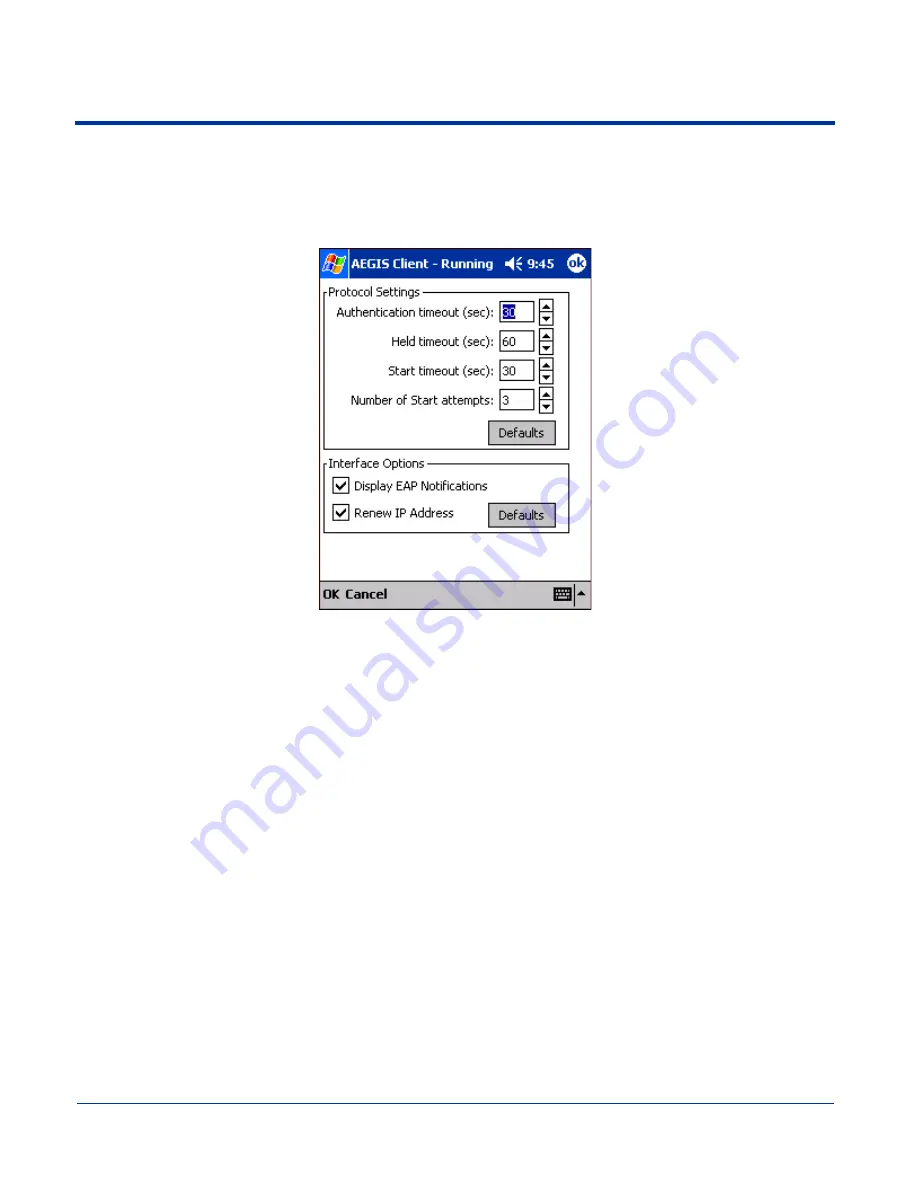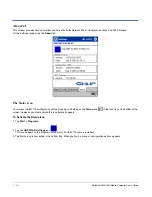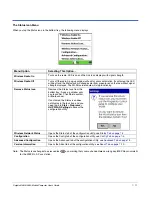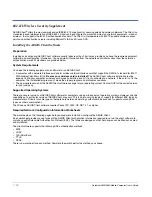
7 - 24
Dolphin® 9500/9550 Mobile Computer User’s Guide
Port Setting Parameters
Port settings parameters rarely need to be modified from their defaults. In most cases, you should modify these settings only if
advised to by technical support. Port Settings are global to all ports.
To open the Port Settings screen, select any adapter in the port list, tap and hold, then select
Configure
on the Port menu. The
Port Settings screen is displayed.
Protocol Settings
These are the timer intervals and retry settings defined in the 802.1X standard supplicant protocol
specification. They determine how long the supplicant state machine will wait in a given state. These
parameters shouldn’t be modified without an understanding of the supplicant state machine. For more
information about the supplicant state machine, obtain its 802.1X protocol specification.
The parameters are:
•
Authentication Timeout
.
The period of time the Client remains in the authenticating or acquired state without
receiving a response from the access point or switch.
•
Held Timeout
. The period of time the Client remains in the held state after failing authentication.
•
Start Timeout
. The period of time the Client remains in the connecting state before restarting when there is no
response.
•
Number of Start Attempts
. The number of times the Client restarts before giving up. At that point, the Client then
defaults to the authenticated state, but there will be no network connectivity because the protocol exchange was never
completed.
The Interface Options are:
Display EAP notifications
This specifies that the EAPOL notification message will be displayed to the user. An authenticator
may use such notification to inform you, for example, about a near password expiration. However,
some authenticators send chatty and annoying notifications that may, for the convenience of the user,
be suppressed. Note that all notifications are written to the event log even if they are not displayed.
Renew IP address
With this option enabled, the Client initiates a DHCP request to obtain a dynamic IP address after a
successful authentication, but only if the client detects that the connected network (the SSID) has
changed. The result is that renewal should not occur upon reauthentication, but does occur at boot
or when connecting to a different network. If you have a slow authenticator, you may wish to enable
this option when configuring the service because the slow authenticator may prevent you from getting
a DHCP-assigned IP address upon boot-up. This option is ignored if the given adapter has a static IP
address.
Summary of Contents for Dolphin 9550
Page 1: ...User s Guide Dolphin 9500 9550 Mobile Computer Windows Powered Pocket PC 2002...
Page 10: ...x Dolphin 9500 9550 Mobile Computer User s Guide...
Page 98: ...5 30 Dolphin 9500 9550 Mobile Computer User s Guide...
Page 108: ...6 10 Dolphin 9500 9550 Mobile Computer User s Guide...
Page 134: ...7 26 Dolphin 9500 9550 Mobile Computer User s Guide...
Page 166: ...8 32 Dolphin 9500 9550 Mobile Computer User s Guide...
Page 192: ...9 26 Dolphin 9500 9550 Mobile Computer User s Guide...
Page 216: ...11 10 Dolphin 9500 9550 Mobile Computer User s Guide...
Page 226: ...12 10 Dolphin 9500 9550 Mobile Computer User s Guide...
Page 236: ...14 4 Dolphin 9500 9550 Mobile Computer User s Guide...
Page 247: ......
Page 248: ...95 9550 UG Rev B...
















































